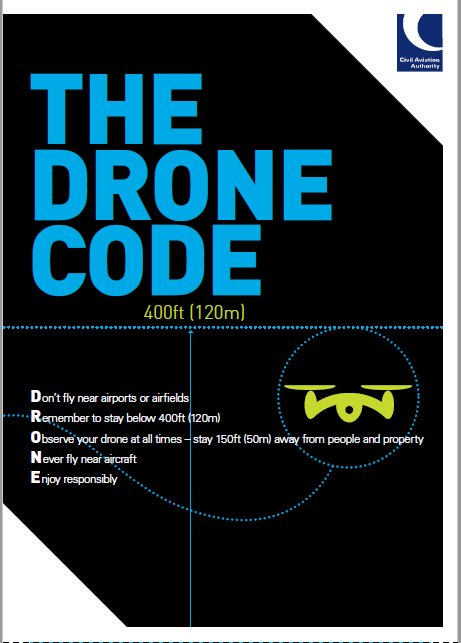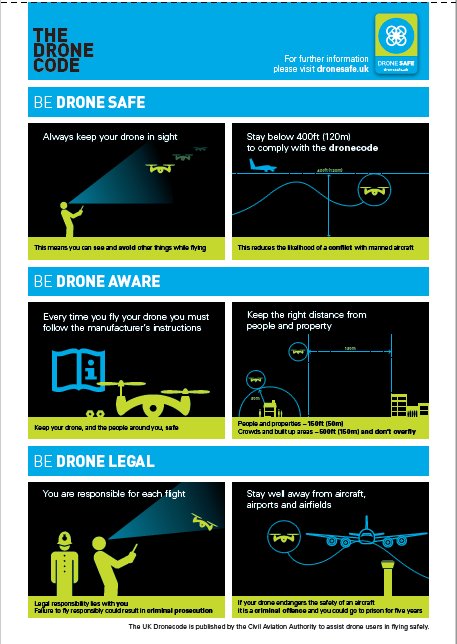Dronecode and guidance for members flying FPV aircraft (all types).
Club member,
With the perceived increase in interest in first person view flying at PMAC I have been asked to send out a reminder about the rules for carrying out this activity within the club environment, particularly in view of the developing situation regarding model flying in the UK.
FPV flying at PMAC is permitted in accordance with rule 6.4:
6.4 Sport and recreational first person view model flying is permitted only in accordance with the terms contained in the CAA ‘First person view pilot exemption for lightweight models’, listed in the BMFA handbook. All flights must take place within the agreed area shown on the attached site plan.
I have taken the trouble to reproduce the CAA document below and I urge anyone carrying out FPV at PMAC to read and follow it.
In summary, though, two people are required for flying each FPV model: a pilot, who is in charge, and a competent observer, who must be able to maintain direct visual contact with the model at all times during the flight. Both are active roles.
The obligations of the pilot are listed in paragraphs c to f of the CAA document (below)
The obligations of the competent observer are listed in paragraph g
There are also a couple of other limitations/clarifications specific to PMAC:
The PMAC field is in controlled airspace and so there is a blanket 400 feet height limit for all flying.
For the avoidance of doubt the agreed area for all model flying, including FPV flying, is limited to within the flying field boundary.
FPV Pilot Exemption for Lightweight Models
The CAA have issued an exemption (Official Record Series 4 No 1226 – General Exemption E4457) which allows the solo flying of lightweight FPV models, subject to the following conditions:
(a) The Civil Aviation Authority, in exercise of its powers under article 266 of the Air Navigation Order 2016 (‘the Order’), exempts any person in charge of a Small Unmanned Aircraft (SUA) from the requirement at article 94(3) of the Order to ensure that direct unaided visual contact is maintained with the aircraft sufficient to monitor its flight path in relation to other aircraft, persons, vehicles and structures for the purposes of avoiding collisions.
(b) This exemption only applies if the conditions at paras. (c) to (g) below are met.
(c) (i) The person in charge is the person piloting the SUA.
Note: The person in charge remains responsible for the safety of the operation and may only fly the SUA if reasonably satisfied that the flight can safely be made.
(ii) The person in charge is accompanied by a competent observer who maintains direct unaided visual contact with the SUA sufficient to monitor its flight path in relation to other aircraft, persons, vehicles, vessels and structures for the purpose of avoiding collisions and advises the person in charge accordingly.
(iii) The maximum take-off mass of the SUA does not exceed 3.5 kg, including any batteries or fuel.
(d) The person in charge must not fly the SUA:
(i) In class A,C,D or E airspace unless permission of the appropriate air traffic control unit has been obtained;
(ii) within an aerodrome traffic zone during the notified hours of watch of the air traffic control unit (if any) at that aerodrome unless permission of any such air traffic control unit has been obtained;
(iii) at a height of more than 1000 feet above the surface (provided the competent observer can maintain visual contact with the SUA throughout the flight);
(iv) over or within 150 metres of any congested area;
(v) over or within 150 metres of an organised open-air assembly of more than 1000 persons;
(vi) within 50 metres of any vessel, vehicle or structure which is not under the control of the person in charge of the SUA;
(vii) within 50 metres of any other person, apart from the competent observer, except when taking off or landing in accordance with para. (viii);
(viii) within 30 metres of any other person, apart from the competent observer, other adjacent model operators, or any model flying club members, during take-off or landing
(e) For the purposes of this exemption, a ‘competent observer’ means someone whom the person in charge has designated as the competent observer.
BMFA Members’ Handbook 63 Effective August 2017
(f) Before designating someone as the competent observer, the person in charge of the SUA must be satisfied that he or she:
(i) has been briefed in accordance with paragraph. (g);
(ii) is competent to perform the tasks which he or she may be called upon to perform in accordance with paragraph (g); and
(iii) is competent by direct unaided visual observation of the SUA, to assist and advise the person in charge with the safe conduct of the flight.
(g) The person in charge must ensure that;
(i) the competent observer is fully briefed on the planned flight and what is expected of him/her taking into account the prevailing conditions;
(ii) the competent observer understands that he/she must stay directly adjacent to the person in charge and maintain direct unaided visual contact with the SUA at all times, to visually and aurally monitor the airspace for other aircraft and the take-off and landing area for any persons;
(iii) the competent observer has been instructed on the actions to take in the event of another aircraft being spotted and a risk of collision is assessed; and
(iv) the competent observer understands that he/she must advise if the SUA is proceedingbeyond the point at which he/she is able to monitor its flight path sufficiently to identify a risk of collision.
(h) This exemption supersedes Official Record Series 4 No. 1168, which is revoked.
(i) This exemption has effect from the date it is signed until varied, suspended or revoked.
BMFA NOTE – The conditions that you must comply with to use this exemption are almost identical to those applied to models over 7 kg. In particular, you MUST take note of the requirement not to fly in any controlled airspace without the permission of the relevant Air Traffic Control Authority. Considering that controlled airspace down to ground is applied to many urban and semi-urban areas, you should check very carefully to avoid flying illegally and negating the exemption.


